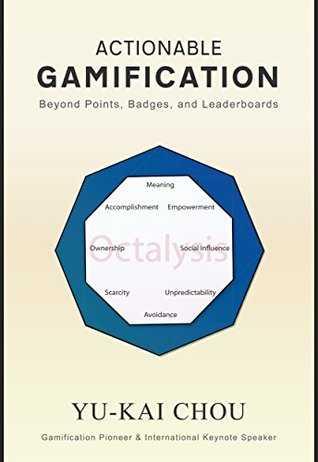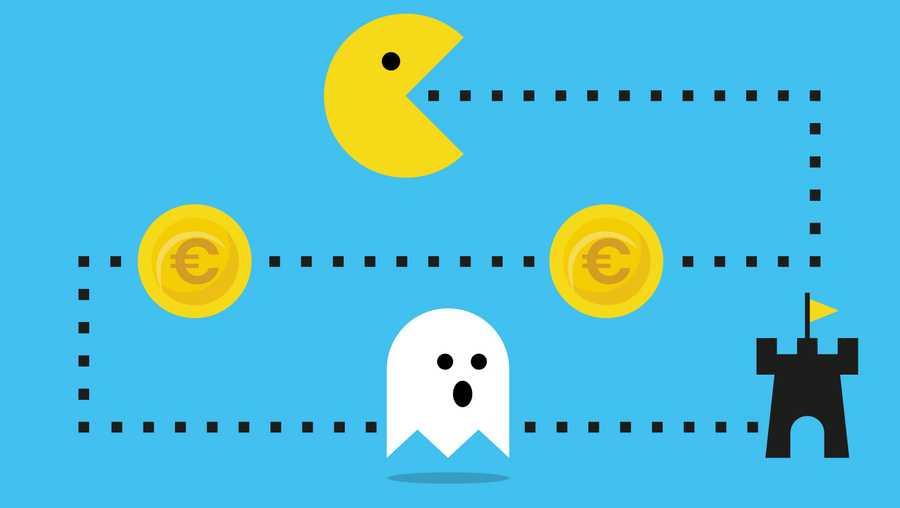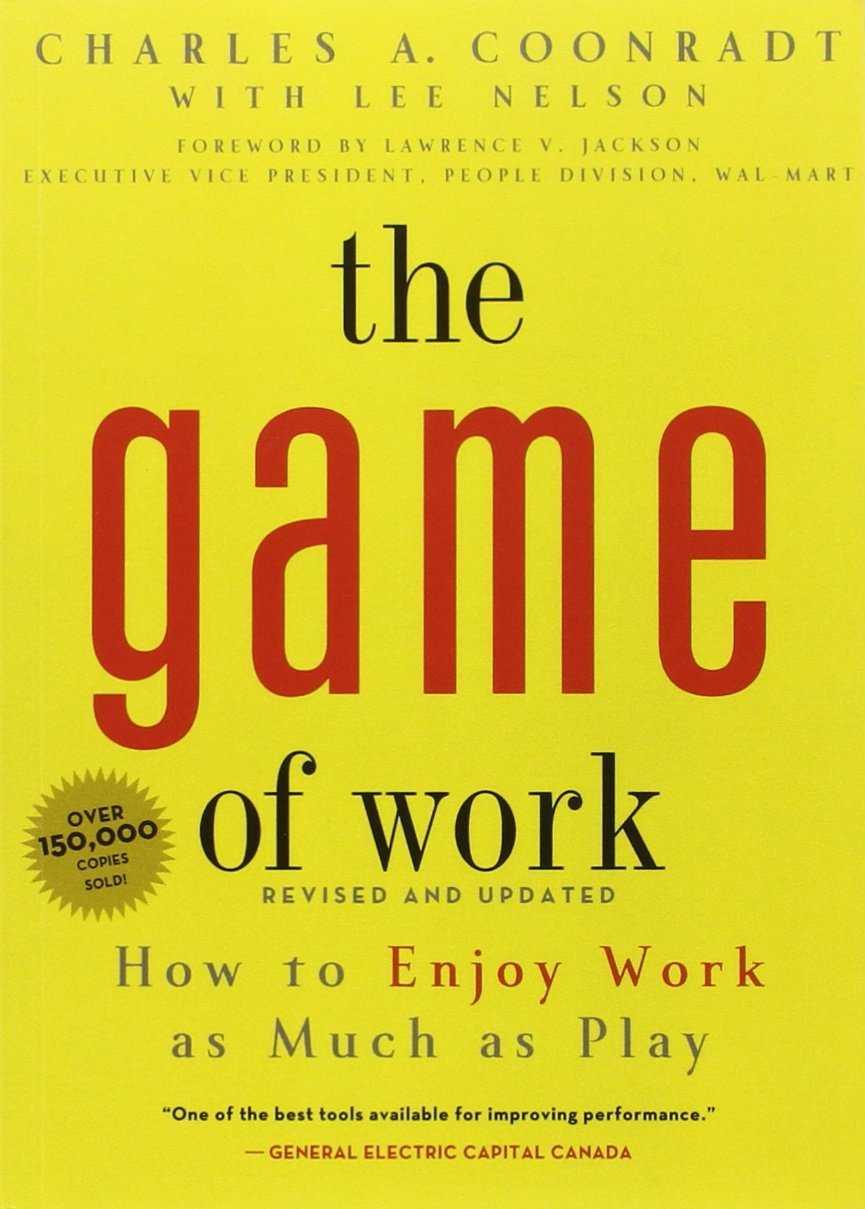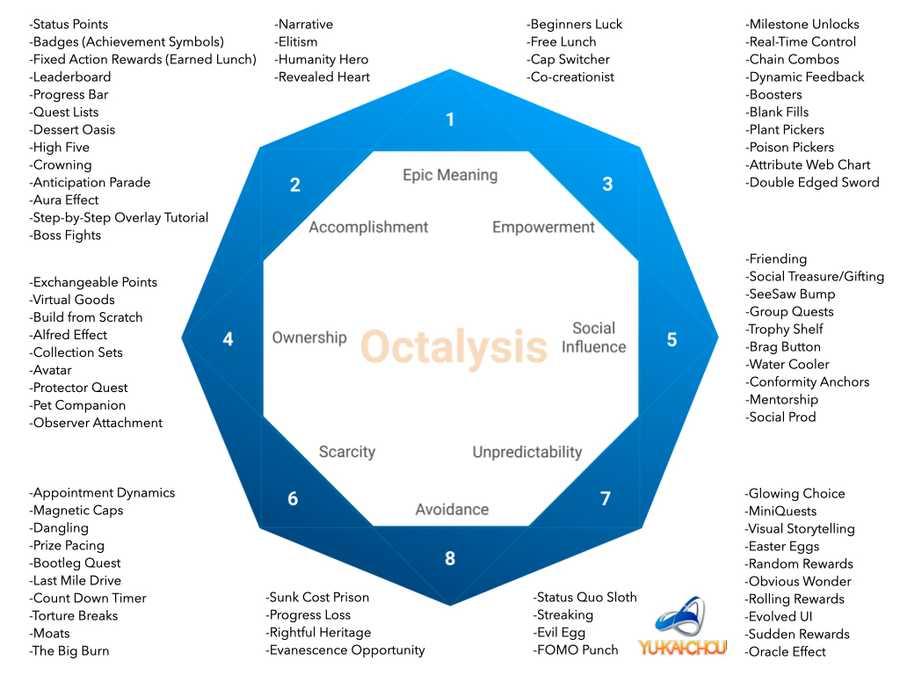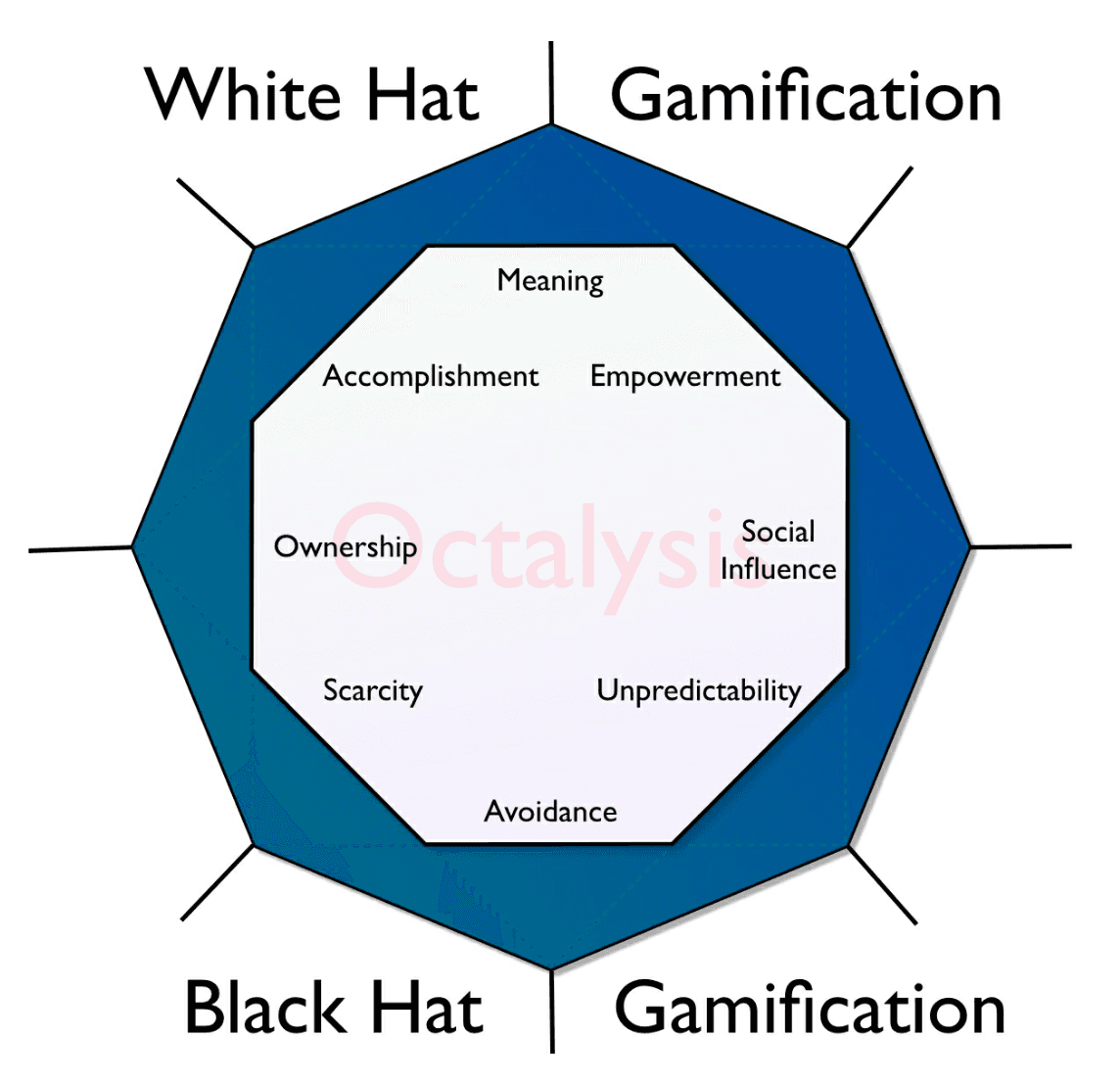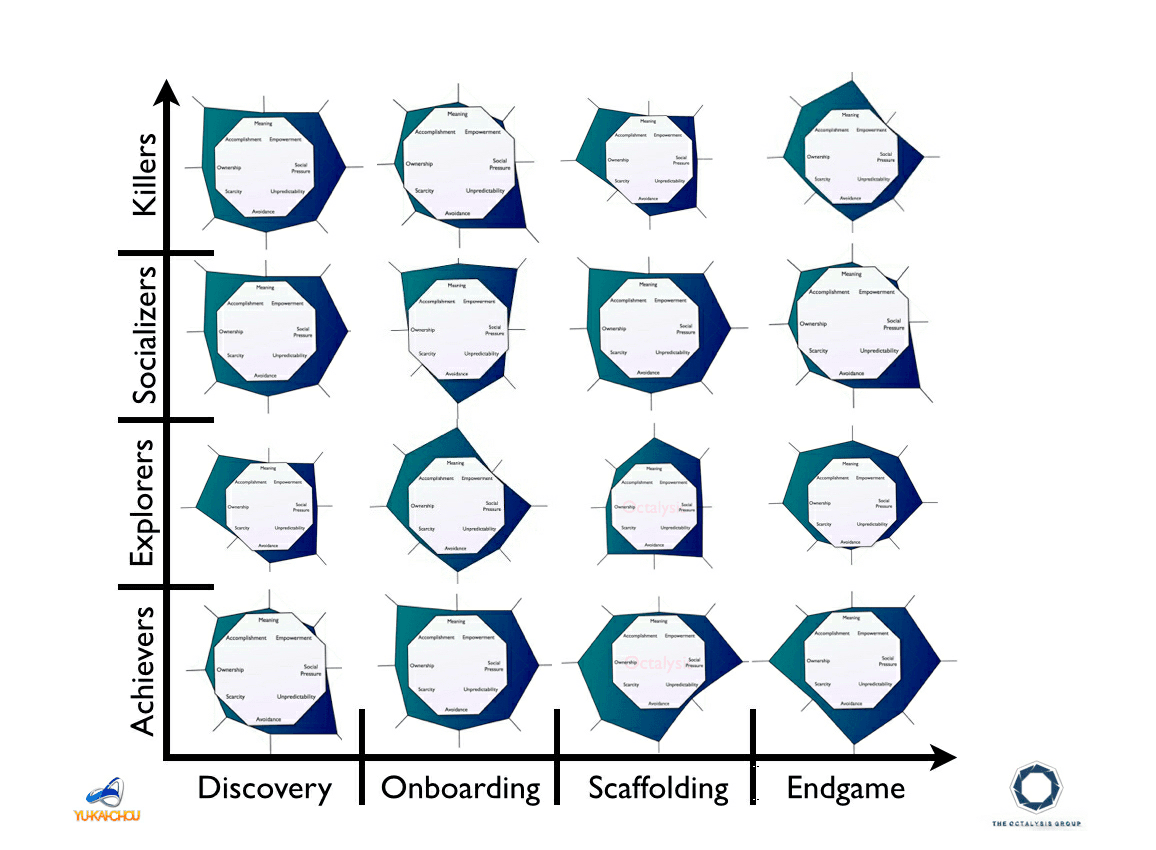Explore the World's Best Ideas
Join today and uncover 100+ curated journeys from 50+ topics. Unlock access to our mobile app with extensive features.
If I were my own role-playing game character, I would never just stay in town, be idle and do nothing. Of course not!
I would go out into the wilderness, defeat monsters, gain experience, learn new skills, accumulate resources, ally myself with those who have complementary skills, learn from those who were of a higher level than I, and seek to conquer exciting quests.
YU-KAI CHOU
525
4.36K reads
Gamification
Gamification is the craft of deriving fun and engaging elements found typically in games and thoughtfully applying them to real-world or productive activities.
Gamification is the science/art of making a boring activity game-like: more intriguing, motivating ... and even “fun.”
445
3.27K reads
The Game of Work
In the book called "Game of Work", Charles Coonradt addressed the question “Why would people pay for the privilege of working harder at their chosen sport or recreational pursuit than they would work at a job where they were being paid?” He then boiled it down to 5 conclusions that led to hobbies being more preferable to work:
- Clearly defined goals
- Better scorekeeping and scorecards
- More frequent feedback
- A higher degree of personal choice of methods
- Consistent coaching
494
2.59K reads
The truth is, simply incorporating game mechanics and game elements does not make a game fun.
YU-KAI CHOU
421
4.62K reads
Octalysis: The 8 Core Drives of Gamification
- Epic Meaning & Calling: believing we are doing something greater than ourselves
- Development & Accomplishment: make progress, develop skills, achieve mastery
- Empowerment of Creativity & Feedback: figuring new things out
- Ownership & Possession: feeling like we own/ control something
- Social Influence: mentorship, acceptance, feedback, companionship, competition & envy
- Scarcity & Impatience: wanting something simply because it is extremely rare
- Unpredictability: when we don’t know what is going to happen next
- Loss & Avoidance: avoiding something negative from happening
527
2.24K reads
Left & Right Brain / Core Drives
The core drives can be divided in half:
- Right Brain Core Drives: They focus on creativity, self-expression & social dynamics. They rely on Intrinsic Motivations – you don’t need a goal or reward to use your creativity, hangout with friends, or feel the suspense of unpredictability – the activity itself is rewarding on its own.
- Left Brain Core Drives: They are associated with logic, analytical thought, and ownership. They tend to rely on Extrinsic Motivation – you are motivated because you want to obtain something, whether it be a goal, a good, or anything you cannot obtain.
449
1.66K reads
White Hat vs Black Hat Gamification
The top Core Drives in the octagon (of the Octalysis gamification framework) are considered very positive motivations (White Hat), while the bottom Core Drives are considered to be more negative (Black Hat).
If something is engaging because it lets you express your creativity, makes you feel successful through skill mastery, and gives you a higher sense of meaning, it makes you feel very good and powerful. But if you are always doing something because you don’t know what will happen next, you are constantly in fear of losing somethingthe experience will often leave a bad taste in your mouth.
439
1.45K reads
The Levels of the Octalysis Framework
Beyond the basic Level I analysis 👇
Level II: optimize experiences throughout all four phases of the player/user journey:
- Discovery (why people would even want to try out the experience),
- Onboarding (where users learn the rules and tools to play the game),
- Scaffolding (the regular journey of repeated actions towards a goal)
- Endgame (how do you retain your veterans)
Level III factors in different player types (like Achievers, Socializers, Explorers, and Killers or specific user cohort).
448
1.38K reads
Drive 1: Epic Meaning & Calling
This is the drive where people are motivated because they believe they are engaged in something bigger than themselves. Wikipedia editors don't feel like they are doing unpaid labour, but they are protecting humanity’s knowledge - something greater than themselves.
When it works, individuals participate in the system and take action not because it necessarily benefits them, but because they can then see themselves as heroes of a grander story. The meaning behind a product generally best communicated during the Discovery and Onboarding Phase of a Player’s Journey.
426
1.22K reads
Drive 2: Development & Accomplishment
The key here is to make sure users are proud of overcoming the challenges that are set out for them. Jane McGonigal, renowned game designer, defines games as “unnecessary obstacles that we volunteer to tackle.”
Most designers working on this primarily focus on the “ease” of doing an activity instead of the motivation behind it.
417
1.06K reads
If a user spends four seconds on an interface and can’t figure out what to do, they feel stupid and will start to disengage emotionally.
YU KAI-CHOU
420
1.59K reads
Techniques for Development & Accomplishment
- The Rockstar Effect: when you make users feel like everyone is dying to interact with them. Twitter's one-way follow is an example.
- Achievement Symbols: points and badges that (and this is the key) symbolize “achievement” - that users themselves want to engage in.
- Leaderboards: where you rank users based on a set of criteria that is influenced by the users’ behaviors towards the Desired Actions.If designed incorrectly, it often does the exact opposite.
- Status Points: For keeping score of progress.
422
1.04K reads
Core 3: Empowerment of Creativity & Feedback
It emphasizes on what most people refer to as “Play.” A user can continuously tap into their creativity and derive an almost limitless number of possibilities, so the game designer no longer needs to constantly create new content to make things engaging. Chess is still played because there are million ways to play the game.
Key Lesson: When you design a game, you want to make sure that there isn’t one standard way to win. Instead, provide users with enough meaningful choices that they can utilize drastically different ways to better express their creativity.
421
871 reads
Techniques for Empowering Creativity
- Boosters: where a player obtains something to help them achieve the win-state effectively. Think about temporary powers in Mario. Boosters are usually limited to certain conditions and to be related to the core action.
- Milestone Unlock: upgrading users so they naturally want to see what these new skills are like
- Choice Perception: the choice itself can be not necessarily meaningful, but merely makes a person feel like they are empowered to choose between different paths and options. Or it can be meaningful if it helps users win against others.
416
763 reads
Drive 4: Ownership & Possession
The motivation that is driven by our feelings of owning something & consequently the desire to improve, protect, and obtain more of it. It involves virtual goods & currencies. It's the drive that compels us to collect stamps or accumulate wealth. On a more abstract level, it is connected to our investment of time or resources into customising something to our own liking.
Pricing plays a big role in the value people attach to something. It also drives us to value our own identities and become more consistent towards our past. We hold closely to our values, characters, or stuff.
413
692 reads
Techniques for Ownership & Possession
- Collection Sets: Giving people a few items, badges & you telling them that this is part of a collection. This creates a desire to complete the set. Pokemon cards.
- Exchangeable Points: users can utilize their accumulated points in a strategic and scarce manner to obtain other valuables. In a game economy.
- Monitor Attachment: develop more ownership towards something that u are constantly monitoring. Like checking metrics after every social post.
- The Alfred Effect: when users feel that a product or service is so personalized to their own needs that they cannot imagine using another service.
424
668 reads
Drive 5: Social Influence & Relatedness
It involves activities inspired by what other people think, do, or say. This Core Drive is the engine behind many themes such as mentorship, competition, envy, group quests, social treasure, and companionship.
Most people focus on competition between users but when you design an environment where people are prone to be envious of others (like in the workplace), you want to make sure there is a realistic path for them to follow to in achieving what they are envious about.
Another important element to consider are social norms, because people will imitate the behaviours of others.
410
636 reads
Social Norms and Meaning
An interesting dynamic between Drive 1: Meaning and Drive 5: Social Influence happens in the workplace. Within a group, the leader is often motivated by Meaning.
The team members of the group, however, are often motivated by Social Influence. They don’t necessarily believe in the higher meaning, just to doing it because they have been told so.
If the leader loses the Meaning and becomes solely motivated by Social Influence , the team will start to crumble from within.
411
605 reads
Competition in the Workspace
Competition in the workplace can be very useful in different scenarios but it can often backfire and demoralize team morale in the long run.
Many competitive workplaces create an unhealthy environment where employees put self-interest above corporate and even customer interests. Instead of working towards a win for the company and a win for the customer, the individual simply focuses on beating the internal competition and coming out ahead of their colleagues.
407
607 reads
Techniques for Social Influence
- Mentorship: get the veterans to guide new users in their journey. Works very well in corporate settings.
- Brag Buttons & Trophy Shelves: when a person vocally expresses their achievements. A Trophy Shelf allows a person to show off what they have accomplished without really saying it.
- Group Quests: group participation before any individual can achieve the Win-State. Raids in WoW.
- Social Treasures: gifts or rewards that can only be given to you by friends or other players.Like votes.
- Social Prods: Likes, thumbs ups etc ....
- Conformity Anchor: display how close users are to social norms
415
558 reads
Drive 6: Scarcity and Impatience
It motivates us because we are either unable to have something immediately, or because there is great difficulty in obtaining it.
- We chase that which moves away from us
- We want what we cannot have
- We only place value on things that are difficult to obtain
415
630 reads
Techniques for Scarcity
- Evolved UI: Locking advanced features to certain desired actions.
- Dangling: regularly showing you appealing items that you want but can’t have. Unless you pay or do a desirable Action. Ideally you must have two options: pay or do actions. And they only work in tandem.
- Magnetic Caps: limitations placed on how many times a user can commit certain Desired Actions.
- Appointment Dynamics: utilizes a recurring schedule where users have to take the Desired Actions to win. Think about Happy Hours at restaurants.
- Torture Breaks: not allowing people to do something immediately. Think social games.
416
583 reads
Drive 7: Unpredictability & Curiosity
This is our natural curiosity to explore the unknown and discover new things. Because “fun” is “pleasure with surprises". It's not fun to spin a wheel an hour for $5, but if every now and then you get a big reward... we have a slot-machine game.
This is mainly about introducing unpredictability into the test mechanics, a variable reward system to keep people engaged. Google's "I am feeling lucky" is a famous representation.
412
591 reads
Techniques for Unpredictability & Curiosity
- Glowing Choice: makes users feel smart and competent during the Onboarding Phase. It leads players in the right direction by appealing to their Curiosity.
- Mystery Boxes: is “loot” or “drops,” which are random rewards that appear once the player achieves a Win-State such as opening a treasure box or defeating an enemy.
- Loteries
412
684 reads
IDEAS CURATED BY
Life-long learner. Passionate about leadership, entrepreneurship, philosophy, Buddhism & SF. Founder @deepstash.
CURATOR'S NOTE
I am a product designer fascinated by game design. Although I am not a gamer, I believe game design can transform boring activities into fun experiences (Will add more ideas as I stumble upon them).
“
Curious about different takes? Check out our Actionable Gamification: Beyond Points, Badges, and Leaderboards Summary book page to explore multiple unique summaries written by Deepstash users.
Vladimir Oane's ideas are part of this journey:
Learn more about books with this collection
Conducting market research
Analyzing data to make informed decisions
Developing a product roadmap
Related collections
Different Perspectives Curated by Others from Actionable Gamification: Beyond Points, Badges, and Leaderboards
Curious about different takes? Check out our book page to explore multiple unique summaries written by Deepstash curators:
3 ideas
D G's Key Ideas from Actionable Gamification
Yu-kai Chou
Discover Key Ideas from Books on Similar Topics
Read & Learn
20x Faster
without
deepstash
with
deepstash
with
deepstash
Personalized microlearning
—
100+ Learning Journeys
—
Access to 200,000+ ideas
—
Access to the mobile app
—
Unlimited idea saving
—
—
Unlimited history
—
—
Unlimited listening to ideas
—
—
Downloading & offline access
—
—
Supercharge your mind with one idea per day
Enter your email and spend 1 minute every day to learn something new.
I agree to receive email updates
